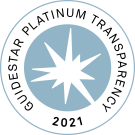Yoga: Universal Wisdom
The POU method is based on a Universal Wisdom and is adaptable and individualizable for each person.
This course is based on the 4 classical ways of yoga, but it is not a yoga course. This course is based on universal teachings.
Why are all these yoga terms, concepts, and techniques used?
Since man is man, he has embarked on various paths to attain knowledge and truth. These are not divergent paths, but are different ways of wanting to reach The Truth, thus, in capital letters. Because the truth can only be One. If different people have different ideas about a concept, these ideas are not the truth, they are just opinions. For this reason, Truth is unique and universal, although it can be reached through different paths.
Yoga describes 4 of these ways to achieve wisdom and inner peace. Yoga means Union.
Gururaj Ananda Yogi belongs to the yogic tradition. He grew up and trained as a spiritual teacher in it, but at the same time he was a cosmopolitan person, traveled around the world and had his place of residence in several countries. He raised a family and worked in private business for many years. All this provided him with a deep knowledge of various cultures and traditions and of the life of the western “ordinary man”.
His spiritual formation and the achievement achieved, allowed him to investigate and discover the essence of all these traditions and ways. That which is unique and identical for the different paths. That which is essential.
He also saw clearly that each person is a unique individual. Therefore, to be fully effective, the practice of meditation must be appropriate for each individual, must fit in with their lifestyle and also with their way of being and their natural tendencies.
From all this knowledge the POU method emerged, based on a Universal Wisdom but, at the same time, adaptable and individualizable in order to satisfy the unique mental, physical, emotional and spiritual needs of each person.
Direct experience as a source of knowledge
Authentic spirituality is based on direct experience, not on faith and belief.
The objective of this course is not to learn to meditate. The objective, if there is any, is to transfer this experience, this learning from meditation to everyday life in order to live in a “meditative” way.
Don’t believe anything because someone has explained it to you. Although he is a very wise person. Experience it. Of all the teachings you receive, those that serve you, hold on tightly and those that don’t, leave them, perhaps someday they will come to you.
Knowledge, truth, arise from direct experience. We all know how to run, but to participate in a marathon it will be very helpful to have a coach, share experiences with other runners and, above all, practice, go running every day.
In the same way, meditation is also an innate ability in the human being. We have all reached this state of mind at some point in our lives (think, for example, when you are dazed looking at the fireplace fire or a sunset). But to enhance this meditation skill, there is no other way to do it than by meditating regularly.
Engagement
That is why it is very important that you do your practices every day. So that you can experience for yourself the benefits of this method and you don’t have to “believe” what they explain to you.
How do we learn to meditate?
Meditating
The pursuit of happiness
We all want to be happy.
Unfortunately there is always something that prevents us from being completely happy.
In the path for the search of happiness we mainly make 3 mistakes:
- We hope that something happens that will make us happy in the future.
- We seek happiness externally. We think that the external is apart from us, separate from us. Many times against us.
- We have a wrong idea (or a wrong perspective) of who we are, what life is and how we relate to life.
Yoga means UNION
- UNION with the present moment (with direct experience: meditation, mindfulness)
- UNION of the external with the internal (awareness of the interaction and correspondence of the internal with the external: understanding).
- UNION with ourselves (personal integration: actions, thoughts and feelings).
The POU method: the 4 yogas. Personal integration.
The POU method “Path of Unfoldment” is a theoretical and practical method for:
- Gradually introducing the practice of daily meditation.
- To deepen in the self-knowledge of the being.
- Drive you towards personal integration.
Integration is doing, thinking and feeling the same thing. Be consistent with yourself, be authentic. For this it is essential to know “who am I?”. When I have a conflict (where I think one thing and feel another), I need to know what is most in accordance with my true nature and act accordingly.
Therefore, the course, the method, is structured in 4 large blocks:
- Karma yoga: Actions. What do you do? How do you do it? “Works are loves not good reasons.”
- Gñana yoga: Thoughts. What you think? What mental dynamics are you trapped in? Intellectual approach.
- Bhakti yoga: Feelings. Love. Compassion. Personal relationships.
- Raja yoga: Meditation techniques and other practices. They bring you closer to the knowledge of your true nature, through observation and direct experience.




